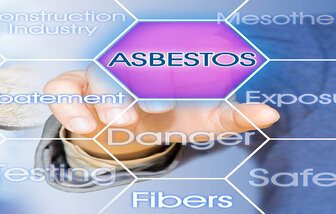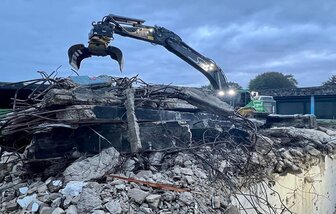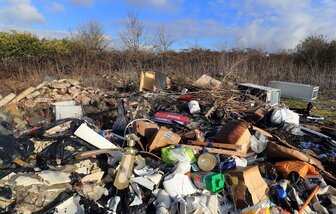What is an asbestos management plan?
An asbestos management plan is a comprehensive document that outlines the strategies, procedures, and responsibilities necessary for effectively managing asbestos-containing materials (ACMs) within a building or facility. It serves as a roadmap for property owners, managers, and occupants to ensure the safe handling, maintenance, and removal of asbestos, minimizing the risk of exposure and potential health hazards.
Asbestos management plan overview
An asbestos management plan is a comprehensive document that outlines the strategies, procedures, and responsibilities necessary for effectively managing asbestos-containing materials (ACMs) within a building or facility.
Learn why an asbestos management plan is important, its components, and how it helps protect occupant health and ensure legal compliance.
Regular review and updates are crucial to maintain the plan’s effectiveness. Implementing an asbestos management plan helps fulfill legal obligations, protect occupant health, and mitigate risks associated with asbestos-containing materials.
An asbestos management plan is a crucial tool for organizations to effectively manage the risks associated with asbestos-containing materials.
By implementing comprehensive procedures, conducting regular inspections, and ensuring compliance with legal requirements, organizations can protect the health and safety of their workforce and the public, while also minimizing costs and preserving their reputation.
If you suspect the presence of asbestos in your facility or workplace, it is essential to consult with asbestos professionals who can assist in developing and implementing an effective asbestos management plan.

An asbestos management plan is crucial for several reasons:
- Legal Compliance: Compliance with local, state, and federal regulations regarding asbestos management is mandatory. Having a well-documented asbestos management plan helps ensure compliance with these regulations, avoiding legal issues and penalties.
- Protecting Occupant Health: Asbestos, when disturbed or deteriorated, can release harmful fibers into the air. Inhalation of these fibers can lead to serious health conditions, including asbestosis, lung cancer, and mesothelioma. An asbestos management plan helps protect the health and safety of building occupants by identifying and managing ACMs.
- Preventing Accidental Exposure: By identifying the location and condition of asbestos-containing materials, an asbestos management plan helps prevent accidental disturbance or damage during routine maintenance, renovations, or demolition activities. It outlines proper procedures for handling and disposing of ACMs to minimize the risk of fiber release.
- Effective Risk Management: An asbestos management plan establishes protocols for regular inspections, monitoring, and maintenance of ACMs. By proactively managing asbestos, property owners can reduce the risk of costly emergency response, remediation, and potential lawsuits.
An effective asbestos management plan typically includes the following components:
- Asbestos Survey: A thorough survey conducted by qualified professionals to identify and assess the presence of ACMs in the building. The survey includes sampling and analysis of suspect materials.
- Asbestos Register: A detailed inventory of all identified ACMs, including their location, condition, and any associated risks.
- Risk Assessment: An evaluation of the potential risks posed by ACMs, considering factors such as accessibility, condition, and likelihood of disturbance.
- Management Actions: Specific strategies and procedures for managing ACMs, including routine inspections, maintenance, monitoring, and response protocols in case of accidental disturbance or damage.
- Training and Awareness: Provision of appropriate training and awareness programs for building occupants, employees, and maintenance personnel to ensure they understand the risks associated with asbestos and how to handle ACMs safely.
- Record Keeping: Maintenance of accurate and up-to-date records related to asbestos management activities, including surveys, inspections, maintenance, and any remediation or removal work.
An asbestos management plan should be regularly reviewed and updated to reflect any changes in the building’s condition, occupancy, or asbestos regulations. It is essential to ensure that the plan remains relevant and effective in managing asbestos risks.
By implementing and following an asbestos management plan, property owners and managers can fulfill their legal obligations, protect the health of occupants, and effectively mitigate the risks associated with asbestos-containing materials.
Asbestos management plans
An asbestos management plan is a comprehensive document that outlines the strategies, procedures, and responsibilities necessary for effectively managing asbestos-containing materials (ACMs) within a building or facility.
Securing your demolition project
Implementing robust security measures, such as perimeter fencing, access control, signage, surveillance systems, and proper lighting, can significantly reduce the
Demolition hazards
If a demolition project is well planned the risks of injury and death can be minimised. It should be emphasised that the planning and execution of a demolition project should only be done by appropriately competent persons.
Notification of intended demolition Section 80
If your considering demolishing an existing building you will need to submit a demolition, Section 80 Notice together with your (RAMS) to your local authority according to section 80
Welfare facilities
Welfare facilities are an essential component of any demolition project. By providing suitable facilities, employers prioritize the well-being and safety of their workers, leading to increased
Demolition plant
Demolition plant is essential in the construction industry, as they ensure the safe and efficient removal of structures. By following strict guidelines and regulations, these plants prioritise safety, efficiency, and sustainability.
Utilities disconnection
Terminating utilities at the boundary is a critical step in the demolition process. It ensures the safety of the demolition crew and the surrounding environment, helps comply with regulations, prevents damage to utilities
Internal soft strip
Soft strip demolition is a crucial process that involves the removal of the internal structure of a building, making it ready for demolition or refurbishment. This process includes the careful removal of various materials.
Planning your demolition project
Learn how to create an effective demolition plan for your construction project. This comprehensive guide covers the key steps, including site assessment, hazard identification, safety measures, waste management, and more.
Managing asbestos
Learn about the dangers of asbestos, its different types, and where it can be found. Understand the health risks associated with asbestos exposure and the importance of proper testing and safe removal. Protect yourself and others from the harmful effects of asbestos.
Dealing with waste
Learn about waste management practices in demolition projects and the legal requirements that must be followed. Understand the types of demolition waste, effective waste management practices, and the laws and regulations governing waste management
Hazardous waste liquids
Hazardous liquids in demolition projects. Understand the importance of identifying, segregating, and properly disposing of hazardous waste. Follow the guidelines the safe handling, storage, and disposal of hazardous
Ready to start your project ?
Committed to Excellence on all levels
Let's Work Together
Please complete the form below and someone from the Total team will be in touch.












